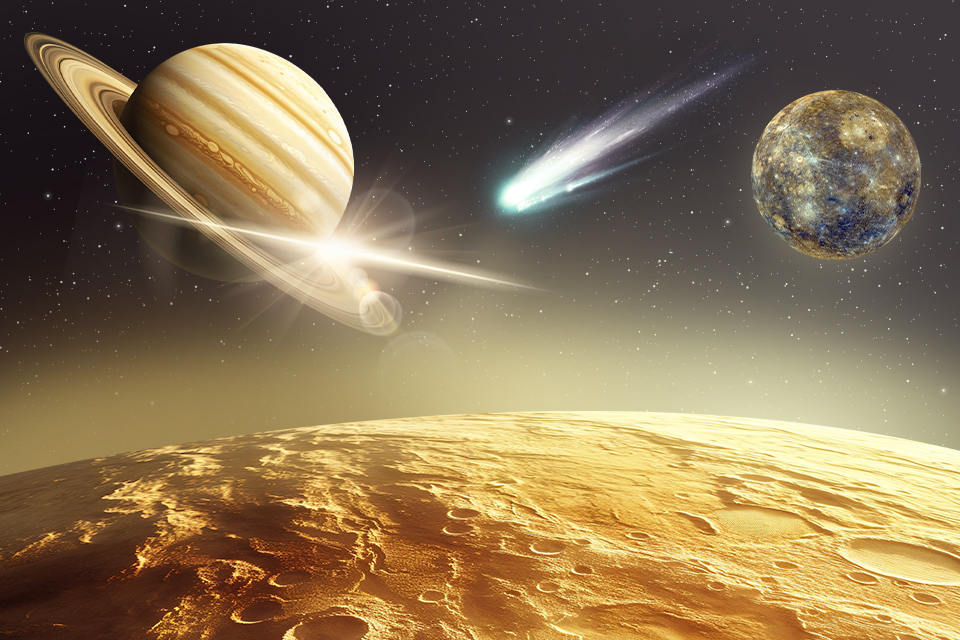In March, the Pons-Brooks comet will continue to gradually increase its brilliance, and at the beginning of the month, the opposition of Juno, the smallest of the first four asteroids, will take place (it was discovered back in 1804). At this time, it will be in an orbit far from the Sun, so its brightness will be below the 8th magnitude. Super new moon is expected on March 10 — passing between the Sun and the Earth, the Moon will come closest to us in 2024.

On March 20, the vernal equinox will come: the center of the solar disk in its movement along the ecliptic will cross the celestial equator and move from the Southern Hemisphere of the celestial sphere to the northern one. On March 22, the approach of Venus and Saturn will be visible in the morning sky. Two days later, Mercury will undergo maximum easterly elongation, which means the best conditions for its evening visibility this year. A penumbral lunar eclipse on March 25 is not observed from the territory of Ukraine. On the night of March 30th to 31st, daylight saving time will take place: Ukrainians, together with EU citizens, will shift the clock forward one hour.
March 3
- The Moon is in the last quarter phase
- The Moon is 2° west of Antares (α Scorpio, 1.0ᵐ)
- Asteroid Juno (3 Juno, 8,6ᵐ) is in opposition
March 8
- The Moon is 4° south of Mars (1.2m)
March 9
- The Moon is 6° east of Venus (-3.9ᵐ)
March 10
- New Moon
- The Moon is at perigee, 356,893 km from the center of the Earth (closest in 2024)
March 11
- The Moon is 6° east of Mercury (-1.4ᵐ)
March 13
- The Moon is 3° north of Jupiter (-2.1ᵐ)
March 14
- The Moon is 3° north of Uranus (5.8m)
March 17
- The Moon is in the first quarter phase
- Neptune in conjunction with the Sun
March 19
- The Moon is 5° east of Pollux (α Gemini, 1,2ᵐ)
March 20
- Vernal equinox. Beginning of astronomical spring
March 22
- The Moon is 4° north of Regulus (α Leo, 1.3ᵐ)
- Venus is 0.4° north of Saturn (1.1ᵐ)
March 23
- The Moon occults the star σ Leo (4,0ᵐ)
- The Moon is at its apogee, 405890 km from the center of the Earth
March 24
- Mercury is at its greatest eastern elongation (18.7° from the Sun)
- Comet Tsuchinshan-1 (62P/Tsuchinshan) in opposition, 0.656 AU (98 million km) from Earth
March 25
- Full moon. Penumbral lunar eclipse
March 26
- The Moon is 1° north of Spica (α Virgo, 1.0ᵐ)
March 31
- The Moon is 4° east of Antares
Follow us on Twitter to get the most interesting space news in time
https://twitter.comne/ust_magazine


